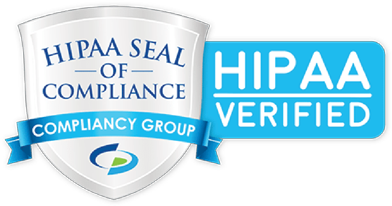
WHAT IS RADIOLOGY BILLING?

RADIOLOGY BILLING PROCESS: OVERVIEW
2. PATIENT REGISTRATION AND INSURANCE VERIFICATION
- KEY PERSON INVOLVED: BILLING COORDINATOR
2. MEDICAL CODING
- KEY PERSON INVOLVED: MEDICAL CODER
3. CHARGE CAPTURE
- KEY PERSON INVOLVED: BILLING COORDINATOR
4. CLAIM CREATION AND SUBMISSION
- KEY PERSON INVOLVED: MEDICAL CODER
5. CLAIM ADJUDICATION
- KEY PERSON INVOLVED: CLAIMS PROCESSOR (BELONGS TO THE INSURANCE COMPANY)
6. PAYMENT POSTING
- KEY PERSON INVOLVED: PAYMENT POSTER
7. DENIAL MANAGEMENT AND APPEALS
- KEY PERSON INVOLVED: DENIAL MANAGEMENT AND APPEALS SPECIALIST
8. PATIENT BILLING AND COLLECTIONS
- KEY PERSON INVOLVED: BILLING COORDINATOR
9. REPORTING AND ANALYSIS
- KEY PERSON INVOLVED: BILLING COORDINATOR
10. COMPLIANCE AND AUDIT
- KEY PERSON INVOLVED: QUALITY ANALYTICS SPECIALIST
CHALLENGES IN RADIOLOGYBILLING AND CODING

Challenges in Radiology Billing and Coding

Frequent Updates

Medical Necessity

Pre-Authorization Requirements

Claim Denials

Insurance Payer Variability

Compliance and Auditing

Technology Integration

Patient Responsibility

Staff Training
HOW IS OUTSOURCING THE BEST PRACTICE?

Specialized Expertise
As mentioned previously, there are many complexities in the process of radiology billing, and therefore, it is best to have professionals onboard. This can be easily achieved with outsourcing the process, as you get access to professionals who specialize in medical billing, coding, and radiology-specific billing regulations.
Enhanced Accuracy
Outsourcing radiology billing helps you get a dedicated team of experts who understand the process and code better. This helps in minimizing coding errors, increasing accuracy of billing submissions, and reducing claim denials.
Focus on Core Activities
Another benefit of outsourcing radiology billing is that it allows healthcare providers to focus on patientcare, diagnostic excellence, and overall service quality while leaving the intricate billing process to experts. This enhances patient satisfaction and the overall reputation of the healthcare practice.
Cost Savings
While outsourcing adds to many steps in the radiology billing process, it also eliminates the need to invest inexpensive billing software, hiring and training billing staff, and maintaining billing infrastructure, which can lead to significant cost savings, especially for smaller practices.
Reduced Administrative Burden
There are a lot of things involved in the radiology billing process, like insurance claims, extensive paper work, and follow-ups on the same. Outsourcing the radiology billing process frees in-house staff from these administrative tasks, enabling them to concentrate on more strategic functions.
Increased Efficiency
A dedicated billing outsourcing company can process claims more efficiently, leading to faster reimbursement and reduced payment cycle times. This results in improved cash flow for the health care provider.
Scalability
Outsourced billing services can easily scale up or down based on the provider’s needs. Whether the practice is growing or experiencing fluctuations in patient volume, the billing process remains flexible.
Compliance and Regulations
When you outsource your radiology billing process to a trusted medical billing company, you increase the chances of getting the best results, as they stay up-to-date with changing healthcare regulations, ensuring that billing practices are compliant. This minimizes the risk of non-compliance penalties and keeps the provider’s billing aligned with industry standards.
Denial Management
The outsourced billing company offers dedicated teams to handle claim denials promptly and efficiently. This leads to higher first-pass claim acceptance rates and increases the chances of successful appeals, improving overall revenue.
Access to Advanced Technology
Billing companies often use cutting-edge billing software and technologies, improving the efficiency of the billing process, data security, and reporting capabilities. Healthcare providers benefit from the latest tools without the need for significant investments.




